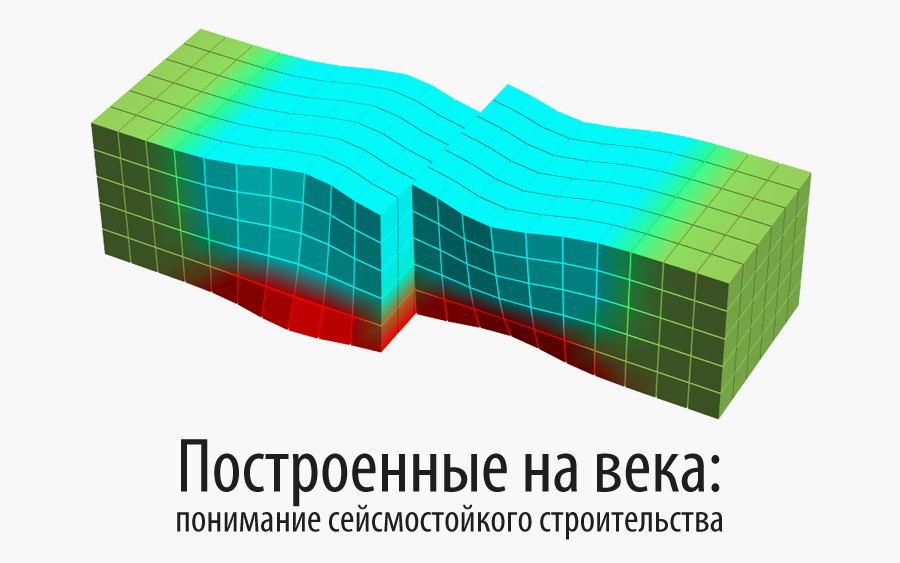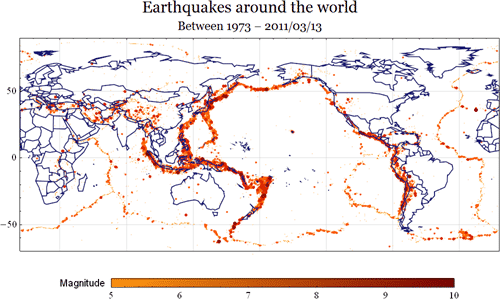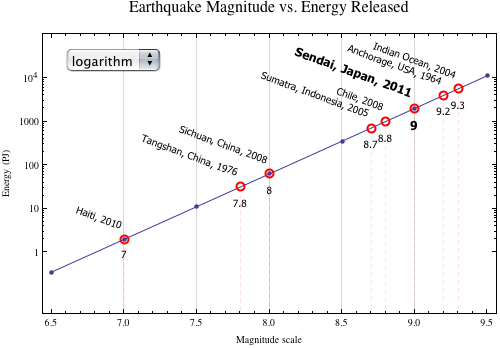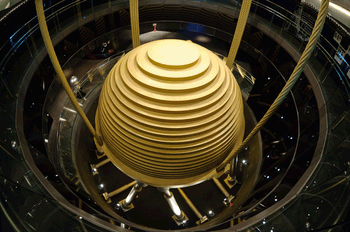Built for ages: understanding earthquake engineering

Translation of the post Yu-Sung Chang " Built to Last: Understanding Earthquake Engineering ".
The code given in the article (with all the mathematical models used) can be downloaded here .
I express my deep gratitude to Kirill Guzenko for his help in translating.
Last week, the world was shocked by the news of major earthquakes and devastating tsunamis in Japan. Events are still unfolding and may become one of the most tragic natural disasters in recent history.
Scientific understanding and modeling of complex physical phenomena and the development based on this analysis are indispensable for the prevention of victims from natural disasters. In this post, we examine the earthquakes from a scientific point of view in order to understand why they occur and how to prepare for them better.
Note : Dynamic examples in this post were created using Mathematica . Download a format file (CDF) to interact with models and further explore the topic.
')
First, let's start with the locations. The following visualization is based on the American Geological Survey (USGS) earthquake database that occurred between 1973 and the beginning of 2011, with magnitudes over 5. As you can see, the epicenters are concentrated in narrow areas, usually on tectonic plate boundaries. In particular, there is serious seismic activity around the Pacific Ocean, namely in the “Ring of Fire”. It so happened that Japan is right in the middle of this very active area.

Earthquakes often form at the boundaries of tectonic plates that form huge faults on the surface. When sufficiently large forces are applied in two different directions, they can overcome the force of static friction between the edges of the plates and cause a sudden movement. The phenomenon, also known as shear, is one of the many mechanisms causing earthquakes. The following animation models a shear break and seismic waves caused by it.
The magnitude of an earthquake is measured by the amount of energy released during seismic activity. Magnitude scale - logarithmic. The following diagram shows the relationship between the magnitude and the released energy for several earthquakes mentioned above.


PJ or petajoule for many, perhaps, is not the most common form of determining the amount of energy. We can use Wolfram | Alpha to convert this value to more familiar measures, such as megatons of TNT explosives. The earthquake at Sendai had a magnitude of 9, and the energy released was approximately 2,000 petajoules:

Just for comparison - the most powerful atomic bomb that has ever been tested - the 58-megaton Tsar-bomb . We are talking about an earthquake with such a magnitude, in which more energy is released than when the most powerful atomic bomb explodes.
The magnitude scale has a logarithmic scale with base 10. For example, the difference in the released energy of earthquakes in Sendai (magnitude 9) and in Haiti in 2010 (magnitude 7):
Thus, the energy released during the earthquake in Sendai, turned out to be 1000 times more than in Haiti.
How is the energy of earthquakes distributed? Most of the energy is converted into heat generated by friction, but some goes to create seismic waves. There are two types of seismic waves: bulk and surface.
Body waves travel through the earth and can be divided by oscillation directions during propagation. In P-waves, particle oscillations occur in the same direction in which the wave propagates — as in sound waves. In S-waves, the particles oscillate perpendicular to the direction of wave propagation.
Surface waves travel only through the crust or surface of the Earth. However, they cause great damage due to a number of their properties. Again, in surface waves, two types can be distinguished — the waves of Love and Rayleigh .
Love waves generate motions similar to S-waves, but in the horizontal plane. These horizontal movements are especially dangerous for building foundations.
Rayleigh waves propagate like waves on a water surface. During propagation, particles move along elliptical paths. Sometimes called ground waves, Rayleigh waves have a low frequency (less than 20 Hz) and usually people, unlike many other animals, do not feel them.
Understanding seismic waves is important for reducing or preventing structural damage to buildings during earthquakes. Thus, the question arises - what can be done about it?
If some external forces are applied to the building, it will begin to sway.
Structural dynamics is very complex and depends on a large number of parameters. However, as an example, I used a simple damped oscillation equation to simulate the effect on a building in the animations presented below (the building bases are represented by gray cylinders):
Oscillations dissipate the energy of seismic waves. Through the selection of materials, structural design, a number of construction techniques, engineers are trying to minimize the effects of earthquakes on buildings. One such example is the inertial damper - a device installed on buildings to suppress harmonic resonance.

Inertial damper on display in Taipei 101. Photo provided by Armand du Plessis.
Another very topical option today is fundamental (seismic) isolation. In an insulated shell, devices like lead-rubber support are placed in the foundation of a building to isolate the structure of a building from vibration from earthquakes.
This method helps to significantly reduce structural stresses. It is also considered a good option for low buildings with high rigidity, or for retrofitting existing structures. In fact, many historical monuments in the USA are already equipped with foundation insulation systems to reduce damage from earthquakes.
This post contains a downloadable CDF file . Most of the examples are dynamic and allow you to interact with the models. You can use Mathematica or the free Wolfram CDF Player to research the models in this article.
Source: https://habr.com/ru/post/261983/
All Articles